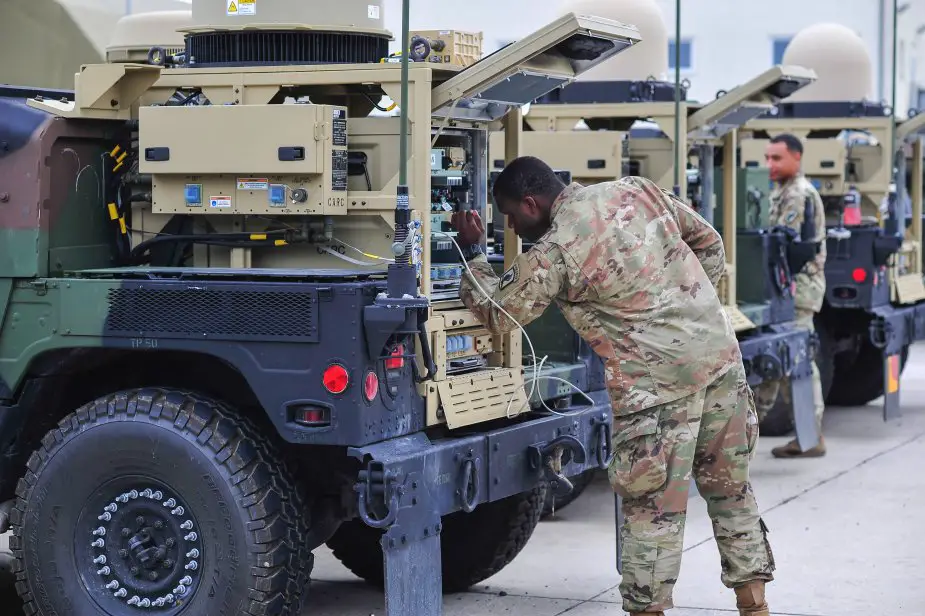The U.S. Army is working toward a new data strategy, which will lay a foundation for its future network that could help soldiers fight and win in an era of great-power competition, officials said. Devon L. Suits, Army News Service, explains.

Paratroopers assigned to the 173rd Airborne Brigade train on point of presence and Soldier Network Extension equipment during Saber Junction 2019 at Grafenwoehr Training Area, Germany, Sept. 7, 2019 (Picture source: U.S. Army / Sgt. Henry Villarama)
"The network is the foundational weapons system for [the Department of Defense] and the Army," said Lt. Gen. Stephen G. Fogarty, commanding general of U.S. Army Cyber Command. "It is absolutely critical to enable the [Secretary of the Army Ryan D. McCarthy and Chief of Staff of the Army Gen. James C. McConville's] mission of multi-domain operations."
The Army's modernization priorities rely on the network to operate and be successful, said Lt. Gen. Bruce T. Crawford, Army chief information officer/G-6. The two officers discussed the way ahead during the Association of the U.S. Army Annual Meeting and Exposition Oct. 15.
Speed will be a critical characteristic of the Army's future network. Within the information environment, the Army must be the first to "sense, understand, decide and act faster" than its adversaries, Fogarty said. "Everything we do must enable the warfighter or decision-makers at the enterprise level," Crawford said. "Not only does winning matter, but speed matters when it comes to the network."
In addition to speed, the Army is reevaluating its common data standards and how data should be implemented across the enterprise. These new standards will ensure the Army's data is "visible, accessible, understandable, interoperable, and secure," all within a trusted environment, Crawford said.
A new data strategy is also necessary before the Army fully engages into artificial intelligence, machine learning, and cloud-based technologies, Crawford said. Without a proper plan, he added, the Army could miss a pivotal opportunity to clean its data, which could subsequently impact future capabilities.
Moving forward, the future network will include more commercial-based technologies. In turn, changes to the network will also necessitate a "change in culture" as the force collectively moves to harness data as a strategic asset, Crawford said.
In the long run, implementing a new strategy and improving the overall speed of the network will be all for not if the Army fails to bring in the proper talent, he said. "The race for talent ties directly to the chief of staff of the Army's No. 1 priority -- people," Crawford said. "Gen. Fogarty and I recognize that we don't have the right skills, right now, to do the things that we need to do in the future. So the question becomes how do we posture ourselves to compete [for talent]?"
The Army Talent Alignment Process could be one way to gain that talent. Through ATAP, the service is refining the way it acquires, maintains, develops, and employs Soldiers and civilians. Officers now have an opportunity to list their unique knowledge, skills, and behaviors, and use that to set their assignment preferences within a regulated, market-style hiring system.
In the future, the Army will migrate ATAP and Assignment Interactive Module version 2.0 into the Integrated Personnel and Pay System-Army, or IPPS-A, to fully integrate all three components.














